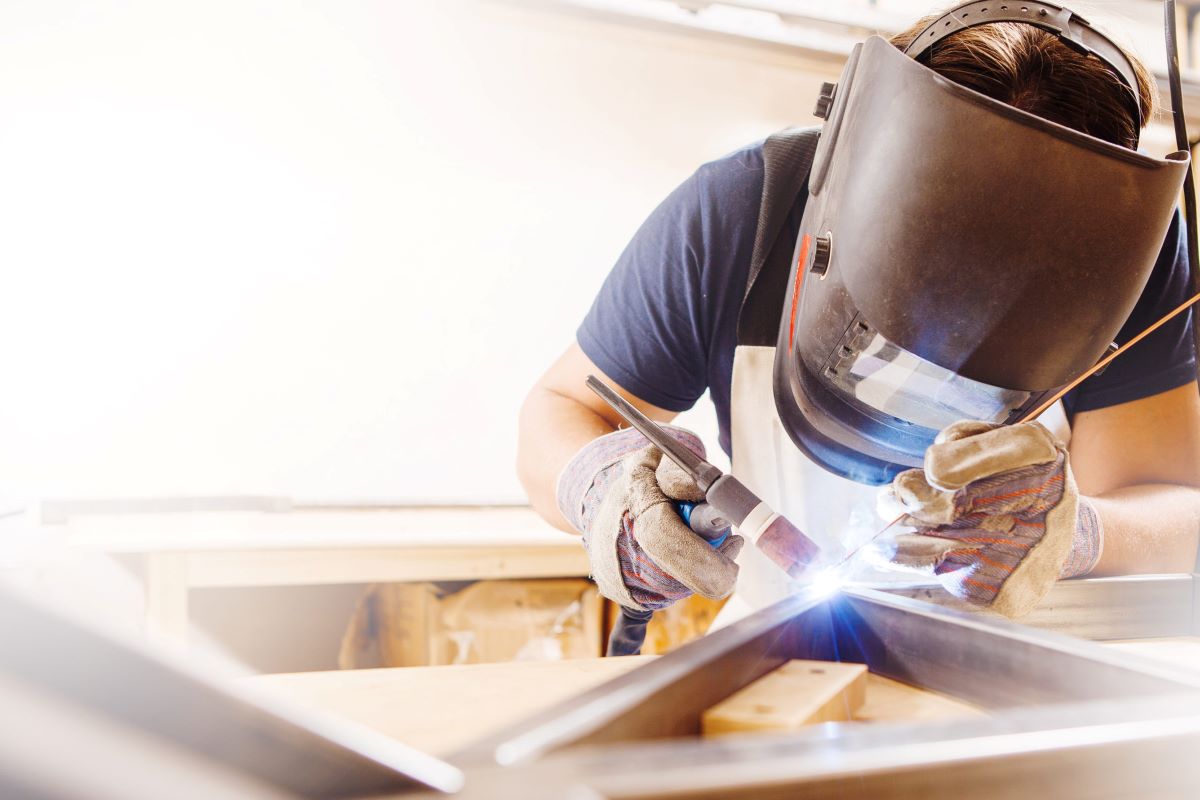Welding is a versatile and essential process in various industries, from automotive to aerospace. However, not all materials weld the same way. Each material has unique properties that influence the welding technique, equipment, and parameters required to achieve a strong, defect-free weld. This article explores the specifics of welding different materials, including steel, aluminum, titanium, and others, to provide insights into the best practices for each.
Welding Steel
Steel is one of the most commonly welded materials, known for its strength and versatility. The two primary types of steel used in welding are carbon steel and stainless steel, each requiring different approaches.
- Carbon Steel
- Techniky: Shielded Metal Arc Welding (SMAW), Gas Metal Arc Welding (GMAW/MIG), and Flux-Cored Arc Welding (FCAW) are commonly used.
- Challenges: Managing heat input is crucial to prevent warping and distortion. Preheating may be necessary for thicker sections to avoid cracking.
- Best Practices: Use appropriate filler materials that match the base metal composition. Control the cooling rate to minimize residual stress.
- Nerezová ocel
- Techniky: Tungsten Inert Gas (TIG) welding and Gas Tungsten Arc Welding (GTAW) are preferred for their precision and control.
- Challenges: Preventing carbide precipitation and maintaining corrosion resistance. Controlling heat input is essential to avoid sensitization.
- Best Practices: Use a low heat input and fast cooling techniques. Utilize backing gas to protect the weld’s backside from oxidation.
Welding Aluminum
Aluminum is valued for its lightweight and excellent corrosion resistance, but it poses unique welding challenges due to its high thermal conductivity and oxide layer.
- Techniky: Gas Tungsten Arc Welding (GTAW/TIG) and Gas Metal Arc Welding (GMAW/MIG) are the most common methods.
- Challenges: The oxide layer on aluminum melts at a higher temperature than the base metal, requiring thorough cleaning before welding. Its high thermal conductivity necessitates higher heat input.
- Best Practices: Clean the surface thoroughly to remove oxides and contaminants. Use AC current in TIG welding to break the oxide layer. Preheating thicker sections can help achieve better penetration.
- Alloy Considerations: Different aluminum alloys have varying weldability. For instance, 1xxx and 3xxx series are easier to weld than 2xxx and 7xxx series, which may require special techniques or filler materials to prevent cracking.
Welding Titanium
Titanium is known for its high strength-to-weight ratio and excellent corrosion resistance, making it ideal for aerospace and medical applications. However, it is reactive at high temperatures.
- Techniky: Gas Tungsten Arc Welding (GTAW/TIG) is the preferred method due to its precision and ability to provide a high-quality weld.
- Challenges: Titanium readily absorbs oxygen, nitrogen, and hydrogen at high temperatures, leading to embrittlement and weld contamination.
- Best Practices: Ensure an inert gas shield (argon or helium) to protect the weld pool and surrounding area. Use high-purity shielding gas and back purging to prevent contamination. Cleanliness is crucial—both the material and welding environment must be free of contaminants.
Welding Other Materials
- Copper
- Techniky: Gas Metal Arc Welding (GMAW/MIG) and Gas Tungsten Arc Welding (GTAW/TIG) are common.
- Challenges: High thermal conductivity requires a high heat input. Porosity can be an issue due to the absorption of hydrogen.
- Best Practices: Preheat the material to reduce thermal gradients. Use deoxidized copper filler rods to minimize porosity.
- Magnesium
- Techniky: GTAW and GMAW are suitable for welding magnesium.
- Challenges: High susceptibility to oxidation and a low melting point.
- Best Practices: Clean the surface thoroughly and use flux to reduce oxidation. Maintain a stable arc to prevent burn-through.
- Nickel Alloys
- Techniky: GTAW and GMAW are effective for welding nickel and its alloys.
- Challenges: High heat input can lead to cracking. Some alloys are prone to intergranular corrosion.
- Best Practices: Use filler materials compatible with the base metal. Control the heat input and interpass temperature to prevent defects.
Závěr
Welding different materials requires a thorough understanding of their properties and appropriate techniques to address specific challenges. For steel, managing heat input and preventing distortion are key. Aluminum demands meticulous surface preparation and control of thermal conductivity. Titanium requires stringent protection from atmospheric contamination. Copper, magnesium, and nickel alloys each bring their unique requirements to the welding process.
By tailoring welding techniques to the material at hand, welders can ensure strong, high-quality welds that meet industry standards and application demands. Embracing these material-specific strategies enhances the efficiency and effectiveness of welding operations across various sectors.

